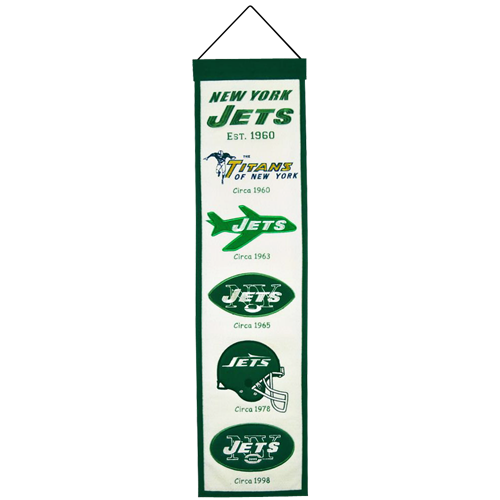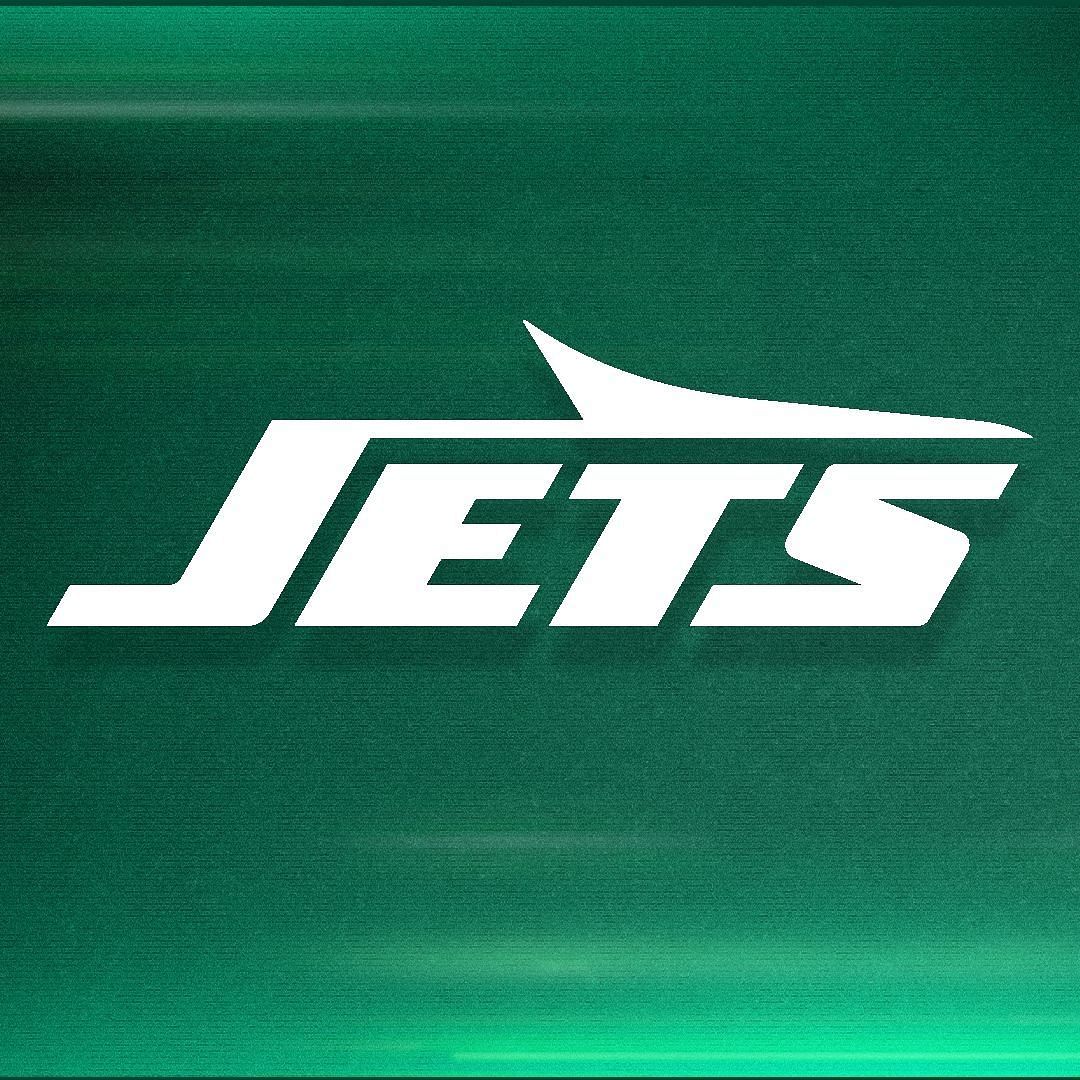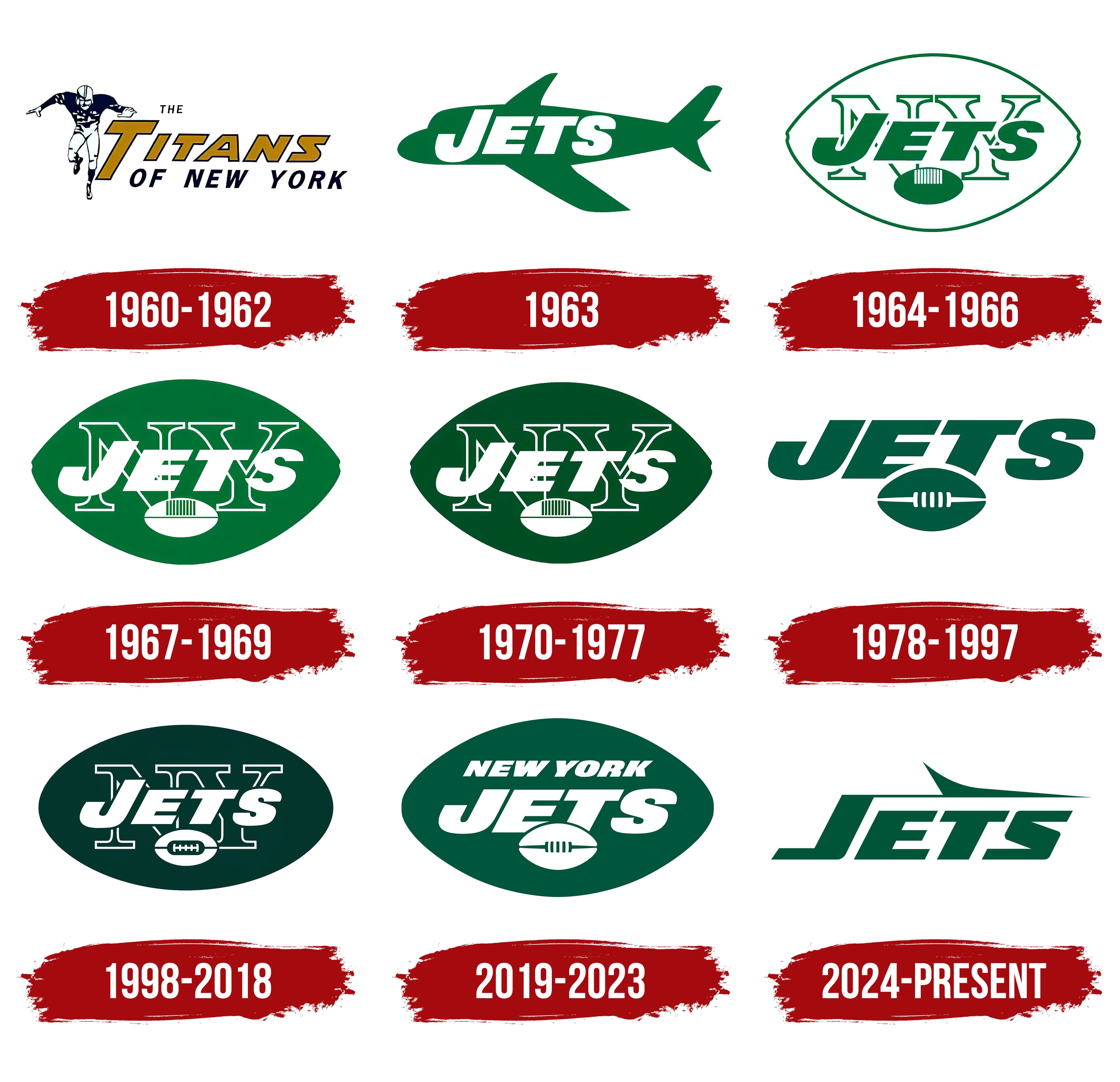New York Jets Logo History: Evolution, Changes & Iconic Designs
The New York Jets logo has seen many changes over the years. Each change tells a story of its own, reflecting the team’s journey and identity.
The history of the New York Jets logo is fascinating. From its early days to the present, the logo has evolved in design and style. Each version marks a different era in the team’s history. Fans and sports enthusiasts often wonder about these changes.
How did the logo transform over the years? What inspired each new design? This blog post explores the evolution of the New York Jets logo. We’ll dive into its history, uncovering the reasons behind each change. Get ready to learn more about the iconic symbols that represent the New York Jets.

Credit: www.palmbeachautographs.com
Early Beginnings
The New York Jets have a storied history with their logo. The evolution of the Jets’ logo is a fascinating journey. Let’s dive into the early beginnings of the New York Jets logo history.
Original Concepts
In the early days, the team was known as the Titans of New York. The original concepts for the logo were simple. They featured a football and the team name. These designs were basic but set the foundation for the future.
The colors were blue and gold. These colors were chosen to stand out. The first designs had a classic look. They represented the team’s strong start in the league.
First Official Logo
In 1963, the team was renamed the New York Jets. With the new name, a new logo was born. The first official logo featured a green football-shaped background. The team name “Jets” was prominently displayed in white letters.
This logo also included a small football graphic. The design was clean and modern for its time. It signaled a fresh start for the franchise. This logo became a symbol of the team’s identity.

Credit: www.sportskeeda.com
1960s Redesigns
The 1960s marked a pivotal era for the New York Jets. This decade saw significant changes to their logo. The team sought a fresh identity. They aimed to reflect their evolving image. Two major redesigns occurred during this period. These changes cemented the Jets’ visual brand.
Incorporating Team Colors
The Jets’ logo in the early 1960s adopted new colors. Green and white became the primary shades. These colors represented the team’s spirit and energy. Green symbolized growth and freshness. White added a clean, modern touch.
This color palette was a departure from the previous darker tones. The new colors gave the logo a vibrant look. Fans quickly recognized and embraced these colors. They became synonymous with the Jets’ identity.
Simplified Aesthetic
Along with new colors, the logo design became simpler. The Jets wanted a logo that was easy to recognize. They aimed for a sleek and modern design.
The new logo featured a football shape. Inside the shape, the word “Jets” was prominently displayed. The letters were bold and straightforward. The design also included a small football graphic. This element added a sporty touch to the logo.
The simplified aesthetic made the logo more versatile. It looked good on various merchandise and promotional materials. The design was clean and uncluttered. This made it easier to reproduce in different sizes and formats.
| Aspect | Details |
|---|---|
| Colors | Green and White |
| Shape | Football |
| Text | Bold “Jets” |
| Additional Graphic | Small Football |
The 1960s redesigns were crucial for the New York Jets. They established a visual identity that resonated with fans. This era laid the foundation for future logo evolutions.
1970s Modernization
The 1970s marked a significant era for the New York Jets. This decade saw the team modernize its logo, giving it a fresh and bold new look. The changes reflected the spirit of the time and aimed to make the team’s identity more prominent and recognizable.
Bold New Look
The New York Jets’ logo in the 1970s embraced a bold design. The previous logo was simplified, focusing on a sleek and modern appearance. The primary color changed to a darker green, making it stand out more.
A football graphic was added, emphasizing the sport. The word “Jets” was prominently featured, ensuring it was the focal point. This new design aimed to project strength and confidence, appealing to both fans and rivals.
Influence Of The Era
The 1970s were a time of change and innovation. Many sports teams were updating their logos to stay current. The New York Jets followed this trend, incorporating contemporary design elements.
The logo’s modern look reflected the dynamic and fast-paced nature of the era. It connected with a younger, more vibrant audience. The design changes helped solidify the team’s identity, making it memorable and impactful.
1980s Innovations
The 1980s marked a significant period for the New York Jets. This era saw notable changes and innovations in the team’s logo. These changes aimed to modernize the team’s image and appeal to a broader audience.
Introduction Of The Jet
In the early 1980s, the New York Jets introduced a new element to their logo. This was the jet. It symbolized speed and agility. The team wanted to reflect these qualities on the field.
The jet was carefully designed. It had sleek lines and a modern look. This design was a departure from the older, more traditional logos. Fans noticed and appreciated this fresh, dynamic approach.
Logo Variations
During the 1980s, the New York Jets experimented with several logo variations. Each version aimed to improve the team’s branding.
Here is a table showing the key changes during this decade:
| Year | Logo Description |
|---|---|
| 1980 | Introduction of the jet symbol, modern design. |
| 1984 | Minor adjustments to the jet’s position and size. |
| 1987 | Color tweaks and sharper lines. |
These variations aimed to refine the logo while keeping its core elements intact. The changes were subtle but effective. They ensured the logo stayed relevant and appealing.
The 1980s innovations of the New York Jets logo were both bold and thoughtful. They set the stage for future designs and established a new era of branding for the team.
1990s Refinements
The 1990s brought notable changes to the New York Jets logo. Designers aimed for a modern touch without losing the team’s identity. They made several refinements to streamline the design and improve logo usability.
Streamlined Design
The Jets logo in the 1990s featured a cleaner look. Designers focused on simplicity. The football shape remained, but lines became smoother. The bold green color stood out more. White letters with a clear outline improved readability. The overall look was sleek and professional.
Logo Usability
Usability became a priority during this period. A simpler logo is easier to reproduce. The refined logo worked well across various platforms. From merchandise to digital media, the logo maintained its integrity. This consistency helped boost the team’s brand recognition. Fans could easily identify the Jets from afar.
2000s Rebranding
The New York Jets have had a rich history of logo changes. The 2000s brought a significant rebranding for the team. This era aimed to reconnect with the team’s storied past while embracing modern design trends. The rebranding process was more than just a logo change. It was a move to strengthen the team’s identity and fan base.
Return To Roots
The rebranding in the 2000s saw a return to the team’s classic look. The design team drew inspiration from the 1960s and 1970s logos. They reintroduced the iconic green and white color scheme. The football icon within the logo was also brought back. This nod to history aimed to evoke nostalgia among long-time fans.
The updated logo maintained a modern touch. It featured cleaner lines and a more refined typeface. The overall look was both classic and contemporary. This blend of old and new was intentional. It was meant to respect tradition while appealing to younger fans.
Fan Reactions
Fan reactions to the rebranding were mixed. Older fans appreciated the return to the classic design. They felt it honored the team’s legacy. The familiar green and white colors brought back memories of past glories.
Some younger fans, on the other hand, were less impressed. They felt the design was too old-fashioned. They wanted something more edgy and modern. Despite this, the rebranding achieved its goal. It created a sense of unity among the fan base. Over time, even the skeptics grew to appreciate the new logo.
The rebranding in the 2000s was a pivotal moment. It reinforced the New York Jets’ identity. The team successfully balanced tradition with modernity, creating a logo that resonated with fans of all ages.
2010s Updates
The New York Jets logo has seen various changes since its inception. The 2010s brought a significant shift in its design. These updates aimed to modernize the logo while maintaining its core identity. Let’s delve into the key changes made during this decade.
Modern Touches
The New York Jets logo in the 2010s received several modern touches. The design team focused on simplifying the logo. They removed unnecessary details, making it cleaner and more adaptable. The logo’s shape became more streamlined, emphasizing a sleek, professional look.
A significant update was the color scheme. The green became more vibrant, creating a bolder appearance. The white was made brighter, ensuring a sharper contrast. This made the logo stand out more effectively, especially in digital formats.
Digital Adaptations
As technology advanced, the New York Jets logo needed to adapt. The 2010s updates included changes for better digital compatibility. The logo was optimized for various digital platforms, ensuring it looked good on screens of all sizes.
One key change was the resolution. The logo was designed in higher resolution formats. This ensured it remained clear and crisp on HD and 4K screens. The team also created different versions for social media, making it versatile across platforms.
These adaptations helped the New York Jets logo remain recognizable and appealing in the digital age. The updates in the 2010s ensured the logo stayed relevant and modern, reflecting the team’s progressive spirit.

Credit: logos-world.net
Current Logo
The current New York Jets logo has a sleek and modern design. It reflects the team’s bold identity and strong heritage. Introduced in 2019, it offers a fresh take on a classic emblem.
Design Elements
The primary design features a bold green oval. Inside the oval, “JETS” is written in white, uppercase letters. Below it, a small football icon adds a sporty touch. The word “NEW YORK” sits above “JETS” in a smaller font.
The font is clean and sharp, creating a modern look. The green and white color scheme represents the team’s history and spirit. This simple yet striking design captures the essence of the New York Jets.
Cultural Impact
The updated logo quickly gained acceptance among fans. It stands as a symbol of the team’s new era and renewed ambitions. Jerseys, merchandise, and memorabilia featuring the logo are popular among supporters.
For the Jets’ community, the logo embodies hope and excitement. It represents their passion and loyalty. Fans wear it with pride, showing their unwavering support.
The current logo also resonates beyond the football field. It appears in media, advertising, and fan events, strengthening the team’s brand. Its recognizable design contributes to the Jets’ identity in the sports world.
Future Possibilities
The New York Jets have a long history of changing their logo. Fans often wonder about the future of the team’s logo. This section explores potential changes and what fans expect.
Potential Changes
Logos can evolve with modern trends. The Jets may consider a sleeker design. This could involve fewer details and a more minimal look. A modern logo can appeal to younger fans. It can also reflect the team’s future ambitions. Colors might also shift. Current colors are green and white. Future designs might include new shades or accents. This keeps the logo fresh and exciting.
Fan Expectations
Fans have strong opinions about the team’s logo. Many want a balance between tradition and modernity. They value the history behind the current design. At the same time, they crave innovation. Surveys and social media can provide insights. Fans often share their preferences online. They might suggest returning to older designs. Or they may propose entirely new concepts. Involving fans in the process can build loyalty. A logo change that resonates with fans can strengthen team spirit.
Frequently Asked Questions
What Year Was The First New York Jets Logo Created?
The first New York Jets logo was created in 1963. It featured a green football with the word “JETS” in white letters.
How Has The Jets Logo Evolved Over Time?
The Jets logo has seen several changes. It evolved from a simple football design to more modern and sleek versions, with updates in 1978, 1998, and 2019.
What Colors Are In The Current Jets Logo?
The current Jets logo features green and white colors. The design includes a green football with “JETS” in white letters and a small football icon.
Why Did The Jets Change Their Logo In 2019?
The Jets changed their logo in 2019 to modernize the team’s brand. The new design aimed to reflect a fresh and dynamic image while maintaining a connection to the team’s history.
Conclusion
The New York Jets logo has seen many changes over the years. Each update reflects the team’s growth and identity. Fans connect deeply with these symbols. The history of the logo mirrors the team’s journey. From its early days to the present, each logo tells a story.
The evolution of the Jets logo is a fascinating tale. It shows how a simple design can hold great meaning. As the team moves forward, the logo will continue to evolve. This rich history is a testament to the Jets’ enduring legacy.






